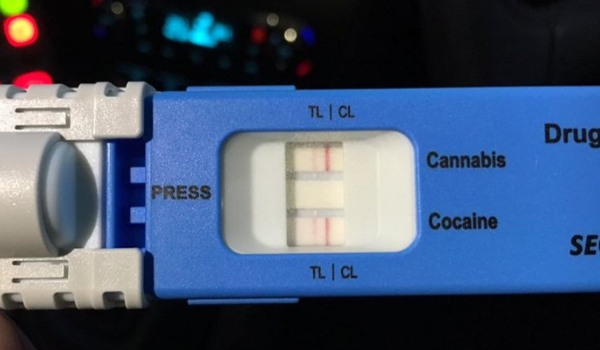Drug-driving cases in Scotland ‘could soon exceed drink-driving’
The number of drug-driving cases in Scotland could soon exceed drink-driving offence figures, according to the Scottish Police Authority (SPA).
An agenda paper ahead of its Forensic Services Committee meeting next Monday says an estimated 800 cases a year were forecast during development of capacity for a new toxicology service in 2017.
Last summer, ahead of the legislation and roadside testing being introduced in October 2019, the required capacity was then increased to an estimated 1,000 cases annually.
The new legislation introduced a near-zero limit for drugs most associated with illegal use, including cocaine, cannabis, ketamine, LSD, meth, ecstasy and heroin and removed the need to prove impairment.
The paper states: “The actual work being received by Forensic Services has been considerably higher than the service provision in place to the extent that now volumes exceed current capacity by in the region of 200 per cent.”
A SPA Policing Performance Committee meeting in May found drink/drug-driving offences had increased by 12.9 per cent (751) from the previous year, with drug-driving legislation and roadside testing accounting for 616 of those cases.
Increases have also been noted in England and Wales, which the paper says was not known when capacity was being developed in Scotland – despite Police Scotland working with other forces at the time the capacity forecast was increased from 800 to 1,000.
It adds: “The learning from England and Wales does indicate that the volume of drugs-driving cases is likely to exceed that of drink-driving in the near future”.
The Scottish government has also provided £180,000 of funding, according to the paper, “for the one-off procurement of additional instrumentation necessary to increase service capacity”.
Tom Nelson, SPA Forensic Services director, said: “Demand for drug-driving toxicology analysis by Forensic Services has far outstripped the demand originally estimated when the changes to the Road Traffic Act 1988 were enacted in Scotland on October 21, 2019.
“While the originally estimated number of cases was around 800 per annum, this estimate soon rose to around 1,000 per annum and the Scottish government provided an additional £180,000 to procure additional instrumentation necessary to increase Forensic Services capacity.
“With the number of cases still steadily increasing, this year there could more than two or three times as many samples for analysis than the original estimated figure and the number of drug-driving cases could soon exceed those for drink-driving.”
He added: “To examine, detect, and quantify each of the 17 drugs is complex and time-consuming work.
“The Forensic Services process passed independent review to the recognised laboratory standard ISO 17025 by UKAS – the UK Accreditation Service.”
A Scottish government spokesperson said: “The new drug-driving offence has been successful in allowing Police Scotland to take action against the small minority of drivers who drive while under the influence of drugs.
“The SPA are raising awareness of the need to ensure effective longer-term planning as demand for forensic testing increases.
“The new offence was established with £444,000 of Scottish government funding and we will be providing a further £180,000 to the SPA to support the increased demand for testing.
“The Scottish government will work with independent justice agencies as they consider what level of forensic testing service will be required for the longer-term.”
Police Scotland’s latest summer drink and drug-drive campaign was the first with the new drug-driving offence operating.
One in 28 drivers were detected for drink/drug offences during the two-week campaign, with 122 failing a roadside drug test. Police Scotland said inquiries into these incidents “remain ongoing, pending forensic tests”.
Between June 27 and July 10, officers stopped 7,457 drivers, with 264 of these detected for drink/drug offences.
This included a 52-year-old man caught speeding at more than 90mph and found to be nearly five times over the drink-drive limit.
Deputy Head of Road Policing, Superintendent Simon Bradshaw said: “Over the course of our summer road safety campaign one in 28 drivers were detected for drink/drug offences and it is disappointing that we are still stopping people who drive while under the influence of drink or drugs.
“Our campaign this year was intelligence-led in order to target areas where we know people take unnecessary risks by drink or drug-driving.”
Scottish Justice Secretary Humza Yousaf added: “It is disappointing that there continues to be a persistent minority of drivers who ignore the law and put their lives and those of others at risk, by driving while under the influence of alcohol or drugs.
“This is the first summer campaign with Scotland’s new drug driving offence operating and the irresponsible actions of these few drivers caught under the influence is discouraging as we try to make Scotland’s roads safer.”







